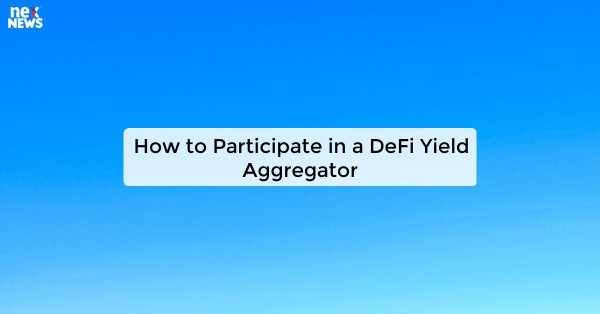What is a DeFi Yield Aggregator?
A DeFi Yield Aggregator is a platform that automatically moves your funds between different decentralized finance protocols to maximize your yield. It does this by leveraging various strategies such as yield farming, liquidity provision, and other DeFi mechanisms to generate the highest possible returns for users. Essentially, it acts as an automated tool that streamlines the process of earning yield in the DeFi space by actively seeking out the best opportunities and managing your assets accordingly.
By using a DeFi Yield Aggregator, investors can benefit from the expertise of the platform in navigating the complex world of decentralized finance. Instead of manually monitoring and reallocating funds across multiple protocols, users can delegate these tasks to the aggregator, allowing them to passively earn more rewards without needing to actively manage their investments. This innovative approach has gained popularity due to its efficiency and effectiveness in generating optimal returns for users in the fast-paced and rapidly evolving DeFi landscape.
Choosing the Right DeFi Yield Aggregator Platform
When selecting a DeFi yield aggregator platform, it's essential to consider factors such as security, user interface, fees, and the range of supported assets. Security should be a top priority, so opt for platforms with robust security measures in place to safeguard your funds. A user-friendly interface can make your experience smoother, especially if you're new to DeFi, so look for platforms that are easy to navigate and understand. Additionally, pay attention to the fees associated with the platform, as high fees can eat into your overall earnings. Lastly, choose a platform that supports a variety of assets to maximize your earning potential and diversify your investment portfolio.
Moreover, it's advisable to read reviews and conduct thorough research before committing to a specific DeFi yield aggregator platform. Assess the platform's track record, user feedback, and any potential red flags that might indicate reliability or trustworthiness issues. Joining communities or forums related to DeFi can also provide valuable insights and recommendations from experienced users. By taking the time to evaluate these factors, you can make an informed decision and select a DeFi yield aggregator platform that aligns with your investment goals and risk tolerance.
Setting Up Your Wallet for DeFi Yield Aggregator Participation
Before diving into the world of DeFi yield aggregators, it is crucial to set up your wallet properly to ensure seamless participation. The first step is to choose a wallet that is compatible with the DeFi platforms you wish to engage with. Popular choices include MetaMask, Trust Wallet, and WalletConnect, each offering unique features and security measures to safeguard your assets.
Once you have selected a wallet that suits your needs, the next step is to fund it with the necessary cryptocurrency. Most DeFi yield aggregator platforms operate on the Ethereum network, so it is recommended to have ETH in your wallet to cover gas fees and transaction costs. Additionally, familiarize yourself with the wallet's settings and security protocols to add an extra layer of protection to your funds. By following these steps, you will be well-prepared to delve into the world of DeFi yield aggregation and start earning returns on your digital assets.
Understanding Liquidity Pools and Yield Farming
Liquidity pools are where assets get locked in smart contracts to facilitate trading. Participants contribute equal values of two tokens, creating a pool that traders can exchange against. In return for providing liquidity, participants earn a share of the trading fees proportional to their contribution.
Yield farming, also known as liquidity mining, involves participants earning additional tokens by providing liquidity to DeFi platforms. Users stake their assets in liquidity pools to generate rewards, which can include trading fees, governance tokens, or other incentives. Yield farming strategies vary in complexity, offering different risk-reward profiles for participants seeking to maximize their returns.
Providing Liquidity to Earn Yield
Once you have selected a DeFi yield aggregator platform that aligns with your investment goals, the next step is to provide liquidity to the platform's supported pools. This involves supplying a pair of assets to a liquidity pool to facilitate trades and earn yield in return. By providing liquidity, you are essentially becoming a liquidity provider and helping to increase the efficiency of the decentralized exchange.
When you provide liquidity to a pool, you will receive LP tokens in return, which represent your share of the total assets in the pool. These tokens entitle you to a portion of the trading fees generated by the platform as well as any rewards distributed to liquidity providers. It's important to keep in mind that impermanent loss may occur if the relative value of the assets in the pool changes significantly, impacting your overall returns.
